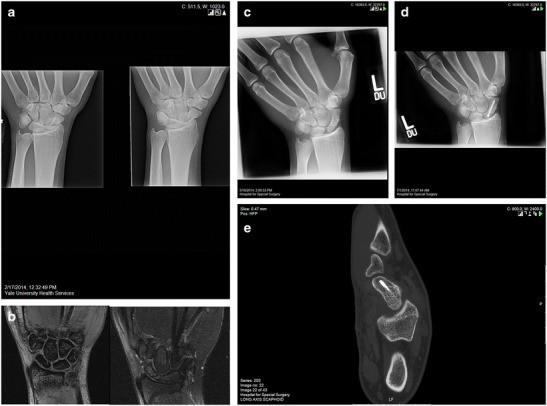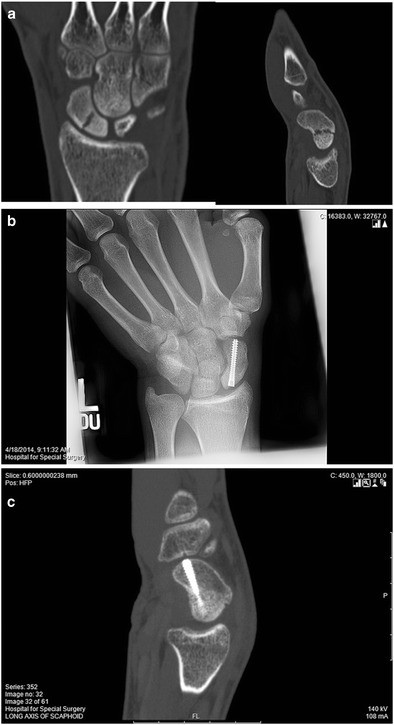Navigating a scaphoid fracture as a football player can be challenging. This guide, created by CAUHOI2025.UK.COM, dives deep into whether playing football with a scaphoid fracture is possible, offering insights and advice tailored for athletes. We cover diagnosis, treatment options, and return-to-play strategies, ensuring you have the knowledge to make informed decisions.
Want to know if you can get back on the field? Let’s explore the details together.
1. Understanding Scaphoid Fractures
1.1. What is a Scaphoid Fracture?
A scaphoid fracture is a break in one of the small bones in your wrist, specifically the scaphoid bone. These fractures often occur from a fall onto an outstretched hand, a common scenario in sports like football. According to the American Academy of Orthopaedic Surgeons, scaphoid fractures are the most common carpal bone fracture.
1.2. Why are Scaphoid Fractures Common in Football?
Football players are at high risk due to the sport’s physical nature. High-impact collisions and falls can easily lead to wrist injuries. The scaphoid bone is particularly vulnerable during these incidents. A study published in the American Journal of Sports Medicine found that wrist injuries account for a significant percentage of all football-related injuries, with scaphoid fractures being a notable subset.
2. Diagnosing a Scaphoid Fracture
2.1. Recognizing Symptoms
The primary symptoms of a scaphoid fracture include:
- Pain on the thumb side of the wrist
- Swelling
- Tenderness in the “anatomical snuffbox” (the area on the back of your hand at the base of your thumb)
- Pain when gripping or squeezing
2.2. The Importance of Early Diagnosis
Early diagnosis is crucial. Delays in treatment can lead to nonunion (failure of the bone to heal), which may require more invasive treatments. A study from the Journal of Hand Surgery emphasizes that fractures treated within four weeks of the injury have significantly higher union rates.
2.3. Diagnostic Tools
- X-rays: Initial X-rays might not always reveal the fracture, as noted in research published by the National Institutes of Health (NIH).
- MRI (Magnetic Resonance Imaging): An MRI is highly sensitive and can detect fractures not visible on X-rays.
- CT Scan (Computed Tomography): A CT scan provides detailed images of the bone and can help determine the fracture’s extent and stability.
 Scaphoid Fracture Diagnosis
Scaphoid Fracture Diagnosis
3. Treatment Options for Scaphoid Fractures
3.1. Non-Operative Treatment
Non-operative treatment typically involves immobilization with a thumb spica cast. This method is usually reserved for non-displaced fractures.
- Cast Immobilization: The duration of cast immobilization can range from 9 to 12 weeks, or even up to 6 months, depending on the fracture’s location and severity. A meta-analysis by Doornberg et al. found no significant difference between short arm and long arm thumb spica casts for nonunion rates.
3.2. Operative Treatment
Operative treatment is often recommended for displaced fractures, fractures associated with ligament injuries, or when non-operative treatment fails.
- Internal Fixation: This involves surgically stabilizing the fracture with screws or plates. According to the Journal of Bone and Joint Surgery, operative fixation is recommended for proximal pole fractures due to the higher risk of nonunion.
3.3. Rehabilitation
Whether you undergo surgery or not, rehabilitation is key to a full recovery.
- Physical Therapy: Physical therapy helps restore wrist range of motion, strength, and function.
- Home Exercises: Performing prescribed exercises at home is essential for regaining full use of your wrist.
4. Can You Play Football with a Scaphoid Fracture?
4.1. Factors Influencing Return to Play
Returning to football with a scaphoid fracture depends on several factors:
- Fracture Stability: Stable, non-displaced fractures have a better prognosis for quicker return.
- Healing Progress: Fracture union (healing) is crucial before returning to play.
- Sport Demands: The demands of football, which involve significant wrist use and impact, must be considered.
- League Regulations: Some leagues may allow players to compete with a cast, while others may not.
4.2. Playing with a Cast
If the league permits, some football players can play with a cast. However, this depends on the position and the ability to perform necessary tasks with the cast.
- Protection: A cast provides protection to the healing fracture.
- Limitations: A cast limits wrist motion, which can affect performance in certain positions.
4.3. Surgical Intervention and Return to Play
Surgical fixation can potentially expedite return to play compared to non-operative treatment.
- Faster Healing: Internal fixation can lead to quicker fracture union.
- Early Range of Motion: Surgical stabilization allows for earlier initiation of range of motion exercises.
4.4. Expert Opinions on Return to Play
Dy et al. surveyed hand surgeons involved in professional athletes’ care and found varied opinions on return to play after scaphoid fracture surgery.
- Protected Play: Many surgeons allow elite athletes to return to protected play 4 to 6 weeks after surgery for non-displaced fractures.
- Unprotected Play: Return to unprotected play varies, with some allowing it after 4 to 6 weeks, others after 6 to 12 weeks, and some waiting more than 12 weeks.
 Scaphoid Fracture Treatment
Scaphoid Fracture Treatment
5. Steps for Safe Return to Football
5.1. Medical Clearance
Obtain clearance from your orthopedic surgeon before returning to play. Clinical union (pain-free range of motion and grip strength) and radiographic evidence of healing are essential.
5.2. Gradual Return
Follow a gradual return-to-play protocol to avoid re-injury. This may include:
- Light Exercises: Start with light exercises to rebuild strength and range of motion.
- Sport-Specific Drills: Gradually introduce sport-specific drills to simulate football activities.
- Contact Drills: Progress to contact drills under controlled conditions.
5.3. Protective Equipment
Consider using protective equipment, such as wrist braces or padding, to provide additional support and protection.
6. Preventing Scaphoid Fractures in Football
6.1. Proper Training Techniques
Ensure proper training techniques to minimize the risk of falls and wrist injuries.
- Strength Training: Strengthen wrist and forearm muscles.
- Technique Training: Practice safe falling techniques.
6.2. Protective Gear
Use appropriate protective gear, including wrist guards or supportive taping, to reduce impact forces.
6.3. Awareness and Caution
Be aware of your surroundings and exercise caution during play to avoid unnecessary risks.
7. The Long-Term Outlook
7.1. Potential Complications
Failure to properly treat a scaphoid fracture can lead to long-term complications, such as:
- Nonunion: Failure of the fracture to heal.
- Avascular Necrosis (AVN): Death of bone tissue due to lack of blood supply.
- Wrist Arthritis: Degeneration of the wrist joint.
7.2. Importance of Follow-Up Care
Regular follow-up appointments with your healthcare provider are crucial to monitor healing and address any complications.
8. Frequently Asked Questions (FAQ)
Q1: How long does it take for a scaphoid fracture to heal?
A: Healing time varies, but typically ranges from 9 to 12 weeks with cast immobilization, or potentially less with surgical fixation.
Q2: Can I play football with a wrist brace instead of a cast?
A: A wrist brace may provide some support, but it is generally not sufficient for a scaphoid fracture. Consult your doctor for specific recommendations.
Q3: What are the signs of a nonunion?
A: Persistent pain, swelling, and limited range of motion are signs of a potential nonunion.
Q4: Is surgery always necessary for a scaphoid fracture?
A: No, non-displaced fractures can often be treated with cast immobilization.
Q5: How can I prevent wrist injuries in football?
A: Proper training techniques, protective gear, and awareness can help prevent wrist injuries.
Q6: What type of doctor should I see for a scaphoid fracture?
A: An orthopedic surgeon specializing in hand and wrist injuries.
Q7: Can I speed up the healing process?
A: Following your doctor’s instructions, maintaining a healthy diet, and avoiding activities that stress the wrist can aid healing.
Q8: What exercises can I do to regain wrist strength after a scaphoid fracture?
A: Gentle range of motion exercises, grip strengthening, and wrist curls are helpful. Consult with a physical therapist for a tailored program.
Q9: Is it possible to fully recover from a scaphoid fracture and return to football?
A: Yes, with proper treatment, rehabilitation, and adherence to medical advice, a full recovery and return to football is possible.
Q10: What should I do if I suspect I have a scaphoid fracture?
A: Seek immediate medical attention for diagnosis and treatment.
9. Conclusion
Returning to football after a scaphoid fracture requires careful consideration of various factors, including fracture stability, healing progress, and sport demands. With appropriate treatment, rehabilitation, and medical clearance, it is possible to safely return to the field. Remember to prioritize your health and follow your healthcare provider’s recommendations.
At CauHoi2025.UK.COM, we understand the importance of getting back to the activities you love. If you have more questions or need personalized advice, don’t hesitate to reach out. Our team is dedicated to providing reliable and easy-to-understand information to help you make informed decisions about your health. Contact us today through our website or visit our location at Equitable Life Building, 120 Broadway, New York, NY 10004, USA, or call us at +1 (800) 555-0199. Let us help you get back in the game!

